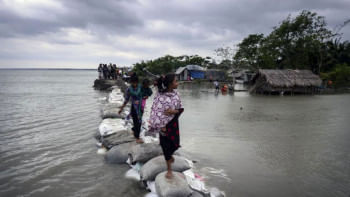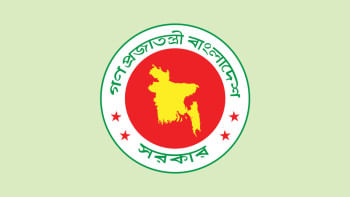Must urbanisation be all-devouring?

In 1985, the United Nations declared through Resolution 40/202 that the first Monday of every October would be observed as World Habitat Day. Countries commemorate this day in order to draw attention to the challenges caused by the rapid rise of urbanisation and its direct or indirect effects on the environment and the state of human poverty. The purpose of this day is to consider the condition of our cities and the fundamental right of all people to adequate shelter. It also aims to remind the global community of its shared responsibility for the future of human habitat.
The UN Agenda for Sustainable Development and Sustainable Development Goal (SDG) 11 – to make cities inclusive, safe, resilient, and sustainable – identifies sustainable urbanisation as one of the most important goals for global development. To complement this goal, "Urban October" begins on October 1 and ends with World Cities Day on October 31. On these precise dates and throughout the month, events are held around the world to commemorate Urban October.
The first World Habitat Day was observed in Nairobi, Kenya in 1986 under the theme "Shelter is My Right." This year, the day has been observed in Balikesir, Turkey, with the theme "Mind the Gap. Leave No One and Place Behind." This year's theme was chosen to address the problem of growing inequality and challenges in cities and human settlements and to draw attention to growing inequalities and vulnerabilities that have been exacerbated by the triple 'C' crises: Covid-19, climate, and conflict.
The aim is to bring representatives of local governments from megacities to medium and small cities, to discuss their current challenges and ways to address growing inequalities, how to narrow the gap between the urban poor and rich, between the rural and urban areas or different neighbourhoods within the cities.

The first of the three priorities in 2022 is to provide adequate housing to all. Adequate housing is central to UN-Habitat's mandate and is contained in the "Leave No One Behind" commitment in the secretary-general's "Our Common Agenda" report. The second priority addresses the key role of cities as contributors to climate solutions. With increased local climate finance, cities could make significant progress towards implementing adaptation priorities set in Nationally Determined Contributions (NDCs). And the third priority for 2022-2023 is localising the SDGs. Local leadership and local action plans on the SDGs have been identified as central to realising the 2030 Agenda for Sustainable Development.
Cities and metropolitan regions are where the effects of change are felt acutely in a passive manner. The economic and social vulnerabilities of our urban way of life was also highlighted by Covid. With two-thirds of the world's population predicted to reside in urban areas by 2050, according to the UN Department of Economic and Social Affairs, sustainable urban development has never been more challenging. This task will only get harder and more daunting in the upcoming future if unplanned urbanisation is not tackled systematically.
Urbanisation brings some of the greatest opportunities and challenges in the world today. Cities are hubs for economic growth and development, but they also have demographic, environmental, economic, and social difficulties. With the adoption of the new Urban Agenda in 2016 by the UN, national and municipal governments across the world have embarked on a transformative route towards achieving SDG 11. By involving all stakeholders, cities may harness transformative change and enhance the lives of their residents. In many instances, however, cities lack the capacity to implement this transformation. It has become a serious global problem to ensure that cities have the capacity, capability, and tools to face the difficulties posed by urbanisation.
As one of the most crucial coastal cities in Bangladesh, Cox's Bazar has a lot of potential to successfully address this year's World Habitat Day goals. Cox's Bazar is the site of the largest refugee camp in the world. More than 1.1 million Rohingya refugees who fled persecution in their home country of Myanmar have placed a great deal of strain on the already fragile ecosystems in the region.
Cox's Bazar is also one of the most vulnerable coastal cities in Bangladesh; therefore, it may effectively contribute to climate solutions by addressing the challenges and local ways of confronting those challenges. The city also has the potential to localise the sustainable development goals by using its numerous resources in a sustainable manner, such as through utilisation of the Blue Economy, fishing, and ecotourism sectors. Here, the local government of Cox's Bazar, especially the Cox's Bazar Development Authority, can play an essential part in making sure that the objectives of World Habitat Day are met and that they function properly together. By collaborating with this particular local authority, it will be possible to effectively confront growing inequality, close the gap between urban poor and rich, bring out possible solutions to tackle the climate crisis, and make the SDGs more localised to the area.
Commodore MN Absar, BN (retd) is the chairman of the Cox's Bazar Development Authority.

 For all latest news, follow The Daily Star's Google News channel.
For all latest news, follow The Daily Star's Google News channel. 








Comments